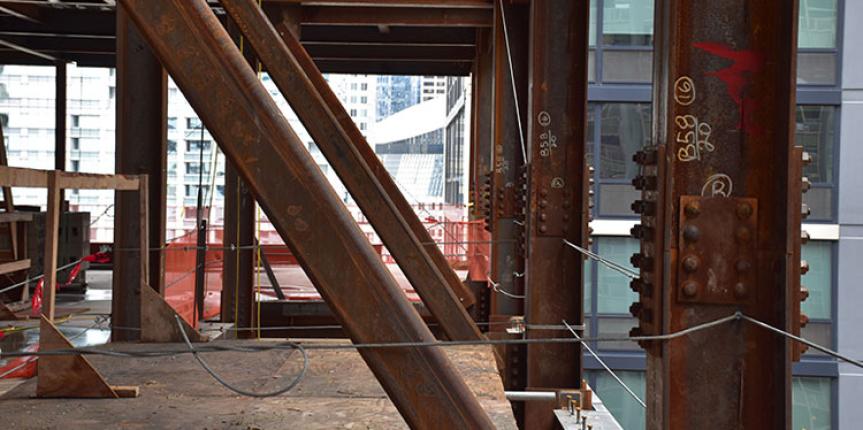
Before talking about steel types, let us understand- “What is steel?”.
What is Steel?
We all are familiar with the physical factors of steel. It is a hard and strong, grey or greyish-blue colour metal, but scientifically, it is an alloy of iron. Other elements such as carbon are also present to enhance its metallic properties.
List of 4 Types of Steel
Steel is categorized into mainly four types, which are:
- Carbon Steel
- Stainless Steel
- Alloy Steel
- Tool Steel
Let us discuss each type of steel briefly.
1. Carbon Steel
As the name suggests, Carbon steel is the type of steel containing a higher percentage of carbon than the rest of the types. The presence of a high percentage of carbon makes this steel surprisingly stronger than the rest, so this steel is ideal for making high-tension wires, automotive parts, etc. Carbon steel is vulnerable to corrosion. Talking about its appearance, it is a dull, dark, matte-looking kind of steel. It is used for making heavy construction equipment.
Carbon steel can be further categorized into four different types, which are-
a). Low Carbon Steel
It consists of a very low percentage of carbon. It is very cheap and hence used abundantly. For improving its strength, it must be operated under cold conditions. It is easy to weld and cut. It is used in making pipelines, cookware, etc.
b). Medium Carbon Steel
It contains a medium percentage of carbon with a very small percentage of manganese. Being stronger than the previous, it is harder to weld or cut. We can harden it by giving it heat. It is used in making Railway tracks and wheels, axle shafts, etc.
c). High Carbon Steel
As the carbon percentage increases, the hardness and strength also increase and makes it difficult to mold or cut the metal. When exposed to heat, it becomes more brittle and harder. It is used for making nails, saws, etc.
d). Super High Carbon Steel
The carbon content is the highest in this type of carbon steel. It is the hardest and most brittle type of carbon steel. It is used for making knives, truck springs, axles, etc.
2. Stainless Steel
Stainless Steel is the most extensively used and most well-known steel present in the market. This steel consists of some chromium percentage, which makes it easy to cast it into different shapes and sizes and makes it resistant to corrosion. Due to its flexible nature, it is used for making household and surgical equipment. It is an attractive, shiny-looking type of steel.
3. Alloy Steel
Alloy Steel, as the name indicates, is an alloy, i.e., a mixture of different elements like aluminium, copper, and nickel, which has improved its mechanical properties. Alloy steel is economical and resistant to corrosion.
4. Tool Steel
Again, the clue is in the name. Tool steel is widely used in making various cutting and measuring tools like hammers. The major elements present in tool steel are chromium, vanadium, tungsten, and molybdenum. Due to these alloys’ presence, tool steel is resistant to heat and is very durable.
What makes them different?
Check out how these types of steel are different from each other-
1. Carbon Steel vs. Stainless Steel
- Carbon steel has a higher percentage of carbon, whereas stainless steel has a higher percentage of chromium.
- Carbon steel can corrode, whereas stainless steel cannot.
- Carbon steel is dull, whereas stainless steel is shiny.
2. Alloy Steel vs. Carbon Steel
- Alloy steel consists of different alloys like aluminium, nickel whereas carbon steel mainly comprises of carbon.
- Due to the presence of different alloys, alloy steel has increased strength and toughness in comparison to carbon steel.
- Alloy steel is resistant to corrosion, whereas carbon steel can corrode.
3. Carbon Steel vs. Tool Steel
- Carbon steel is not versatile for making different kinds of working tools due to less durability than tool steel.
- Tool steel is heat resistant and corrosion, whereas carbon steel resistant to any of them.
- Carbon steel is very brittle as compared to tool steel. This makes tool steel very flexible and mouldable and, thus, very versatile.
